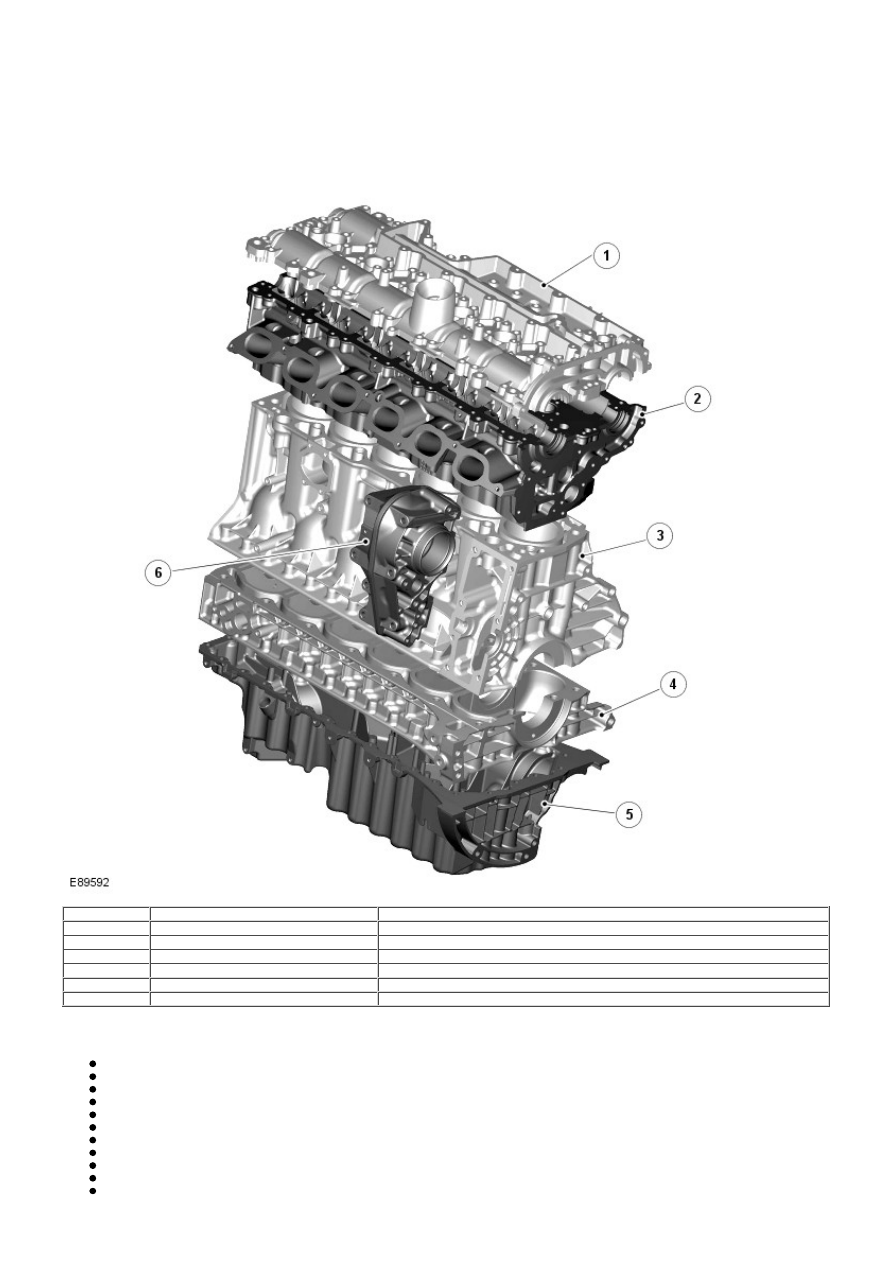Frelander 2. Manual - part 152

Control Module (ECM) controls the fuel injection system and the ignition system.
The cylinder block is of aluminum alloy construction with cast iron liners and a pressed aluminum bedplate section bolted to the
bottom of the block to improve lower structure rigidity. The single-piece oil sump is also of a pressed aluminum construction. The
cylinder head and the camshaft bearing housing are manufactured from cast aluminum. The exhaust manifolds are of a fabricated
stainless steel twin skin design incorporating catalytic converters and a moulded plastic acoustic cover is fitted over the upper
engine to reduce engine-generated noise.
Engine Structure
Item
Part Number
Description
1
-
Camshaft bearing housing
2
-
Cylinder head
3
-
Cylinder block
4
-
Bedplate section
5
-
Oil pan
6
-
Gear housing
Technical features
The engines technical features include:
A 6-cylinder, inline configuration, liquid cooled, aluminium cylinder block with cast iron liners
Pistons are cast from a light alloy metal, with 2 compression rings and a 3-piece oil control ring
Aluminum cylinder head, incorporating 2 camshafts
Four valves per cylinder
Variable lift height hydraulic valve tappets (intake only)
Variable Camshaft Timing (VCT) (intake only)
Crankshaft vibration damper to give the crankshaft a smoother operation
A single gear driven camshaft timing chain drives both camshafts
An aluminum bedplate section between the oil pan and cylinder block
A forged steel crankshaft with induction hardened bearing surfaces
Forged steel connecting rods